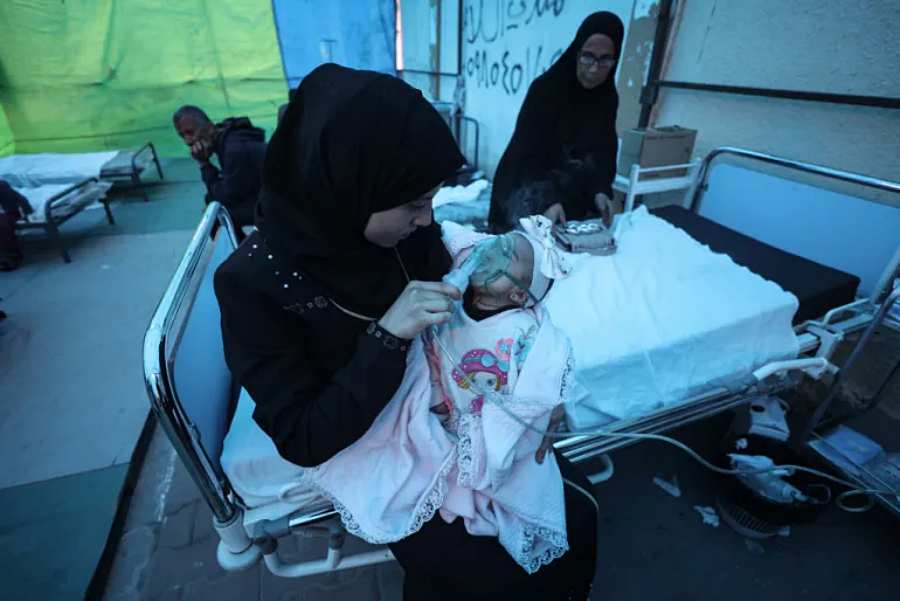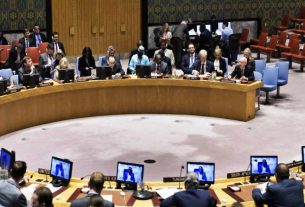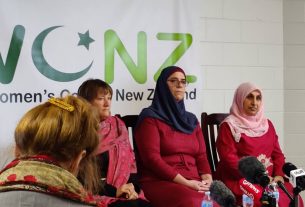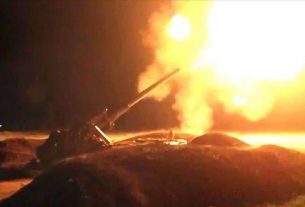![]() Photo: Loay Ayyoub/The Washington Post via Getty Images]
Photo: Loay Ayyoub/The Washington Post via Getty Images]
Sat 16 December 2023:
Families have turned to burying the bodies of their relatives killed in Israeli airstrikes in makeshift mass graves scattered throughout the Gaza Strip.
The burials in makeshift graves are due to the difficulty of reaching cemeteries because of the ongoing aggression.
Palestinians interviewed by Anadolu said the graves are intended to be temporary until a humanitarian cease-fire is declared or hostilities cease. At that point, the bodies will be moved to official cemeteries in cities.
DOCUMENTING 120 MAKESHIFT GRAVES
The head of the Euro-Mediterranean Observatory for Human Rights, Rami Abdu, said his teams have documented “more than 120 makeshift mass graves in the governorates of the Gaza Strip for burying the victims of the ongoing Israeli war.”
Abdu noted in a previous statement to Anadolu that “people in the Strip have resorted to establishing makeshift mass graves in residential neighborhoods, courtyards of homes, streets, wedding halls, and sports stadiums, given the difficulty of accessing main and organized cemeteries.”
“We have documented more than 120 makeshift mass graves where 3 or more individuals from targeted families are buried,” he said.
Abdu explained that families turned to the option due to the “impossibility of reaching main cemeteries due to road closures, infrastructure destruction, and ongoing targeting operations.”
“Burial operations face great difficulty due to the loss of most or all family members, making burial procedures impossible. Additionally, hospitals face difficulty receiving the deceased, especially with the cessation of operations in Gaza City and the north,” he said.
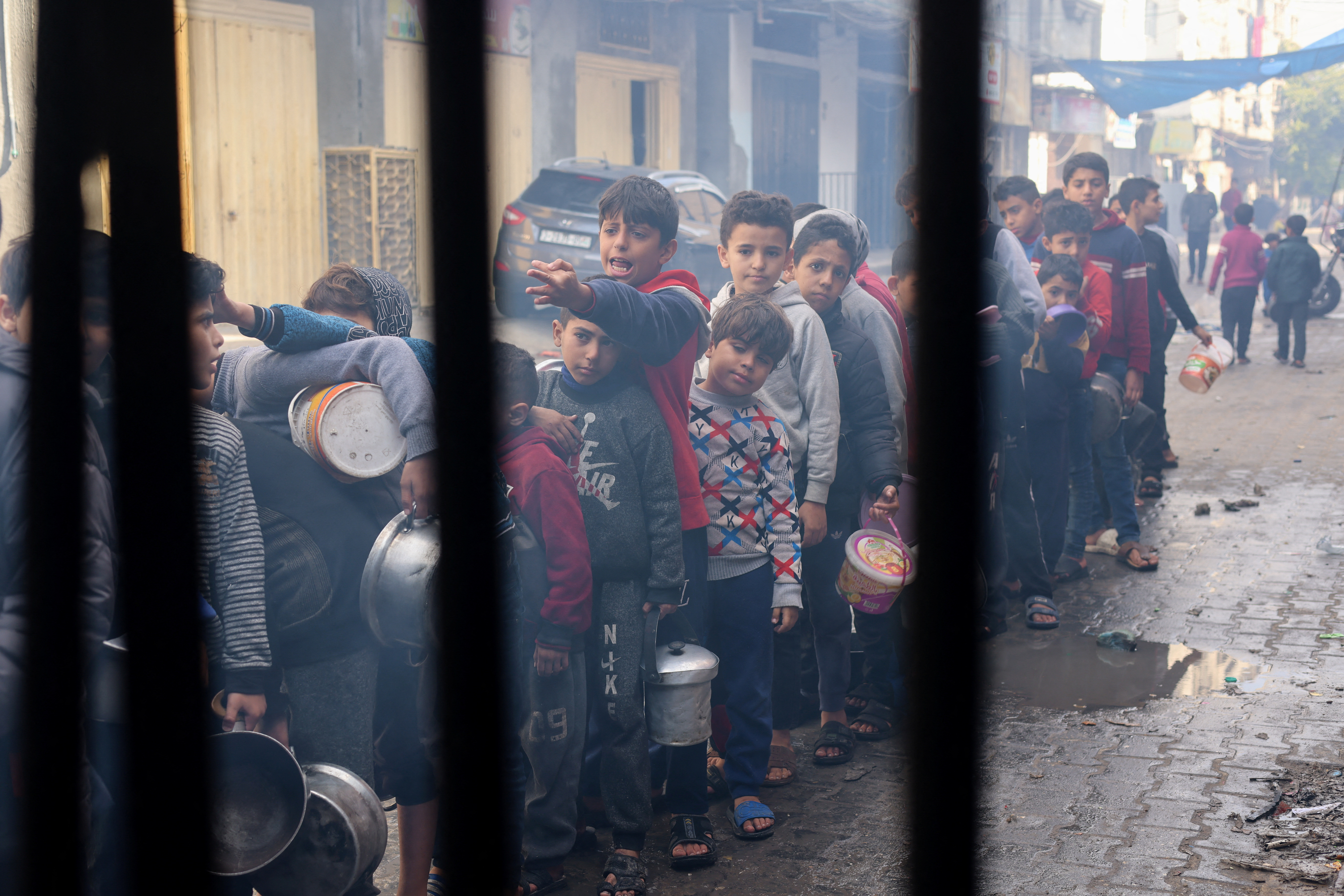
Palestinian children queue to receive food cooked by a charity kitchen amid shortages in food supplies in Rafah. [Saleh Salem/Reuters]
UNAVOIDABLE CHOICE
During its siege in November, the Al-Shifa Medical Complex turned into a cemetery as the administration had to bury dozens of martyrs in scattered mass graves on its premises, corridors and various facilities.
That was after bodies decomposed and the Israeli army refused to allow their removal for burial.
The Al-Shifa Medical Complex is the largest healthcare institution providing medical services in the Gaza Strip. It used to receive thousands of patients and wounded individuals daily, in addition to refugees seeking shelter before it was forcibly evacuated by the Israeli army.
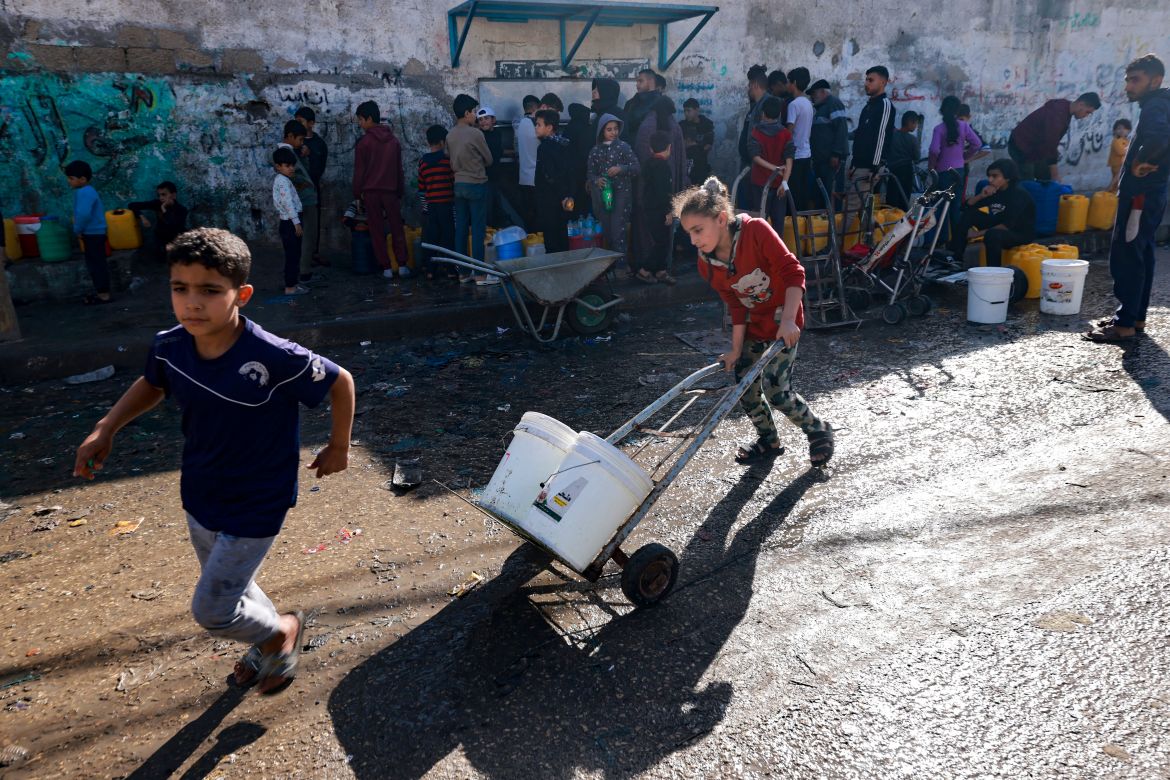
Drinking and bathing water would need to be available at minimum required levels, according to emergency humanitarian standards, while greater amounts of food and medicine would need to come into the Gaza Strip with safe passage provided for humanitarian convoys to deliver it, the aid workers say. [Mohammed Abed/AFP]
On Nov. 12, medical teams at Al-Shifa buried around 100 bodies of Palestinians who were injured in Israeli airstrikes and breathed their last breath in the hospital, according to a statement by the Director-General of the Palestinian Ministry of Health in the Strip, Munir Al-Bursh.
On Nov. 14, the Israeli army stormed the complex after besieging it for several days, during which clashes took place with Palestinian fighters in its vicinity. The army withdrew after 10 days, leaving extensive destruction and several casualties and injuries.
The situation was not different at the Al-Quds Hospital, affiliated with the Palestinian Red Crescent Society in Tel Al-Hawa neighborhood west of Gaza City, and at the Indonesian Hospital in the north of the Strip. Both witnessed makeshift burial operations within their premises.
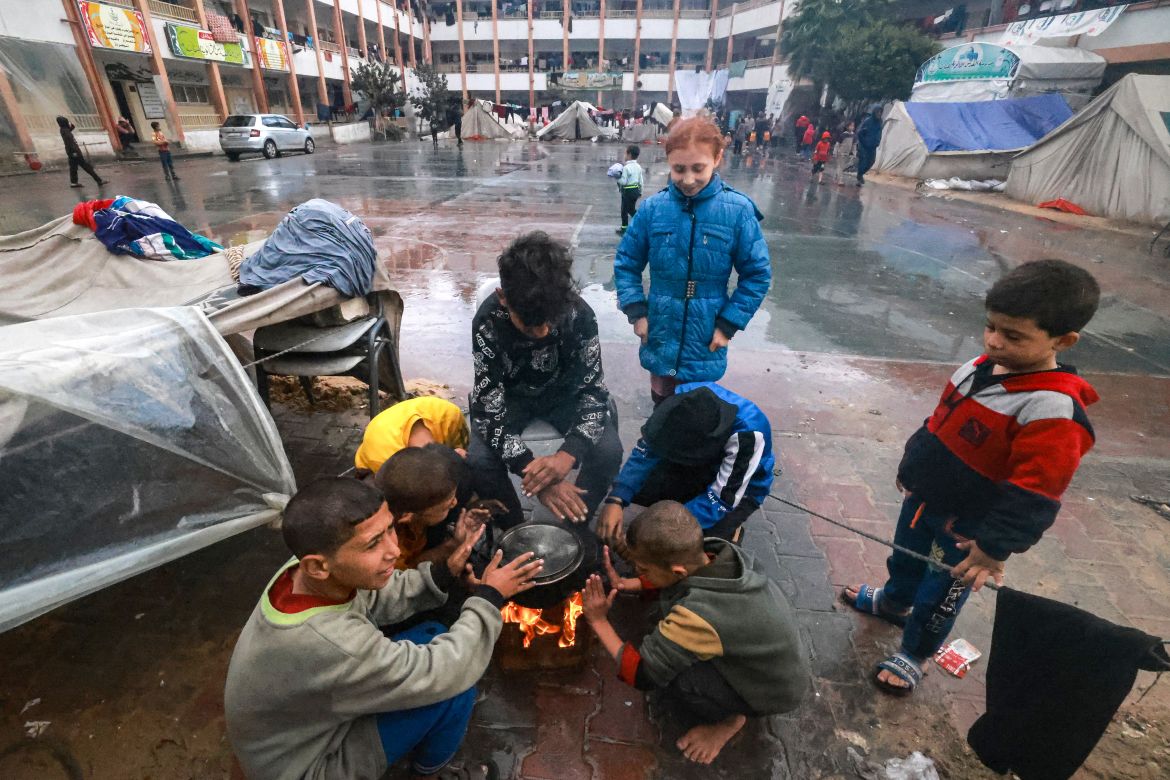
Palestinian children seek warmth as they gather around a fire at a camp set up in a schoolyard in Rafah. Heavy winds and rains have ripped through flimsy tents and caused flooding that forced people to spend nights huddled in the cold on wet sand. [Mohammed Abed/AFP]
“The administration decided to bury a number of martyrs whose bodies began to decompose in a small garden in the new building during the siege period,” according to a doctor from Al-Quds Hospital.
The doctor, who preferred not to disclose his name, explained to Anadolu that workers were forced to take the measure due to the “crowding of martyrs and the spread of the smell of decomposing bodies in the hospital corridors before its forced evacuation in November, and the army’s refusal to allow the bodies to be taken out for burial.”
In November, the Israeli army separately entered the Al-Quds and Indonesian hospitals after besieging them for days and directly targeting them.
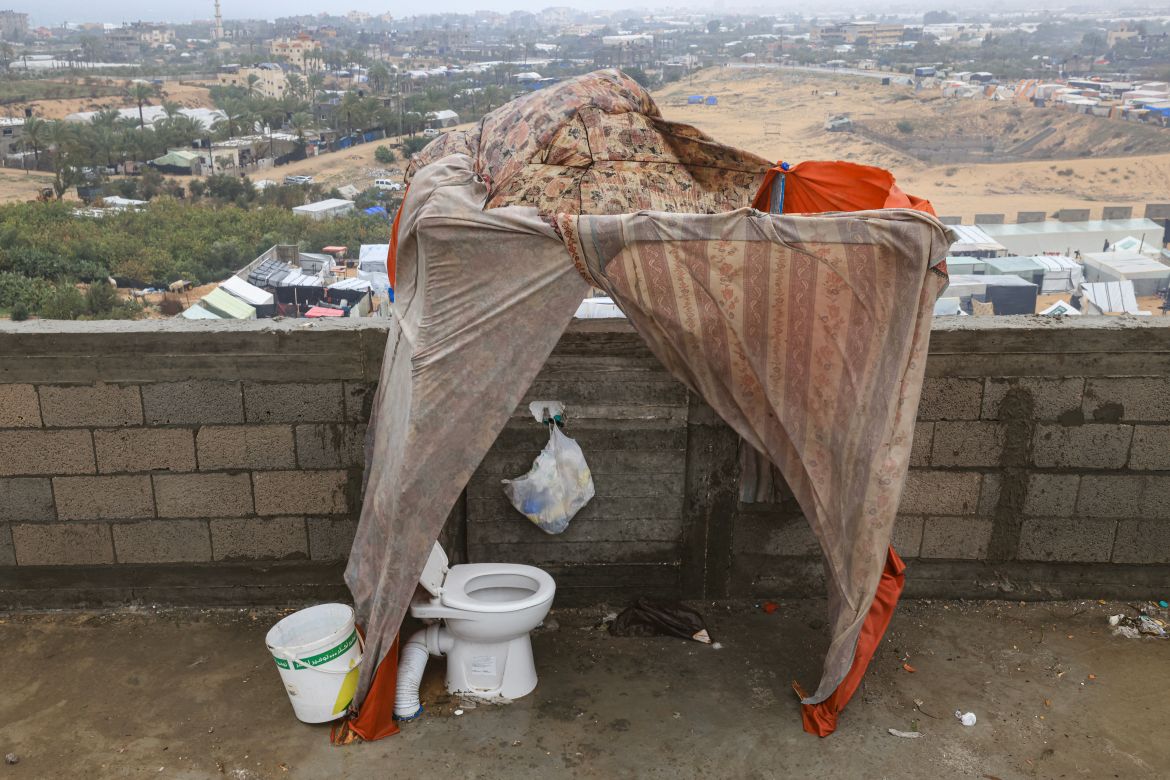
‘Many of the shelters are overwhelmed with people seeking safety, with four or five times their capacity,’ said Juliette Touma, the UNRWA’s director of communications. ‘Most of the shelters are not equipped with toilets or showers or clean water.’ [Mahmud Hams/AFP
In Jabalia, in the northern Gaza Strip, journalist Anas Al-Sharif, who works for Al-Jazeera, was forced to bury his father, Jamal Al-Sharif, 65, in the courtyard Monday of one of the schools in the Jabalia Refugee camp. That was due to the difficulty in reaching the main cemetery in the camp because of the ongoing shelling.
Palestinians also resorted to burying war victims in makeshift graves dug inside the market of the camp, next to the shops, in squares and on streets.
On Dec. 9, Anadolu documented the creation of a mass grave in the market square of the camp and its alleys.
Witnesses informed Anadolu that bodies were buried in green spaces between the two sides of the streets in the Strip.
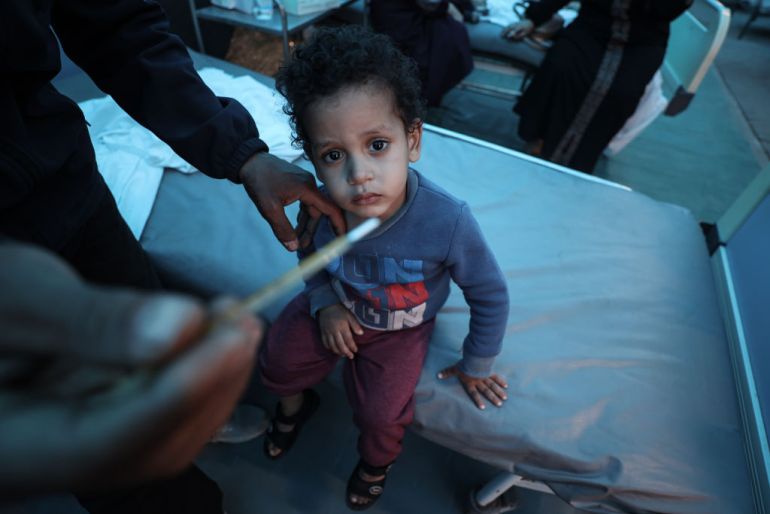
The Palestinian health ministry reported 360,000 cases of diseases in crowded shelters for the 1.9 million people displaced by Israel’s offensive. [Loay Ayyoub/The Washington Post via Getty Images]
TARGETING GRAVES
Journalist Adham Al-Sharif, working with a local newspaper in Gaza City, said that “with the increasing number of martyrs and their congestion inside hospitals, the difficulty of movement and mobility, and the inability to access many cemeteries, citizens and medical personnel have resorted to burying martyrs in new mass graves.”
Al-Sharif, who refused to leave Gaza City and relocated to the Sahaba area in the Al-Daraj neighborhood in the city center, said: “Dozens of unidentified bodies in hospitals began to decompose over time, emitting odors that were disturbing to patients, the wounded, displaced individuals, and medical staff.”
He explained that “the only solution presented to medical staff and displaced individuals in Gaza City in light of the Israeli army’s ground incursion was to find the nearest vacant piece of land where martyrs could be buried.”
He noted that one doctor took it upon himself to “bury 120 unidentified martyrs after finding an empty piece of land in Al-Daraj neighborhood, east of Gaza City, with an area not exceeding 500 square meters (5,381 feet), belonging to one of the citizens.”
“Even this land, which turned into a cemetery for martyrs, did not escape the aggression. The army targeted an adjacent residential building, and its debris fell on the graves, burying some martyrs under the rubble and on top of the graves,” said Al-Sharif.
Mahmoud Basal, spokesperson for the Civil Defense in Gaza, said reports of missing persons under the rubble of buildings destroyed by Israeli airstrikes in the southern and northern areas of the Strip exceed 8,000.
He told Anadolu that “the Israeli army targets entire residential blocks throughout the Strip and destroys them over their inhabitants.”
“The bombing of these blocks makes the process of rescuing victims extremely difficult given our limited capabilities,” he said.
Source: AA
______________________________________________________________
FOLLOW INDEPENDENT PRESS:
WhatsApp CHANNEL
https://whatsapp.com/channel/0029VaAtNxX8fewmiFmN7N22
![]()
TWITTER (CLICK HERE)
https://twitter.com/IpIndependent
FACEBOOK (CLICK HERE)
https://web.facebook.com/ipindependent
Think your friends would be interested? Share this story!


